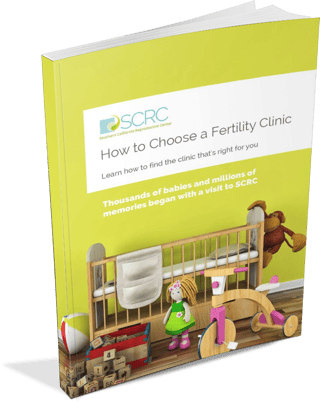I've never been one to take a lot of drugs (I have too many other vices). But once you open the door to fertility treatments...expect to start waiting in long lines at the pharmacy. And I am not talking about your local neighborhood pharmacy, where you multi-task and buy cheap makeup while investigating the "as seen on TV" aisle. I am talking about doing some hard-time at a "compound".
You see, after you make the decision to go down the in vitro fertilization road, your first stop will be to a compounding pharmacy—one that specializes in fertility medication. And while embarking on this journey, believe me when I tell you, do not pass go, do not collect $200 dollars...because that amount doesn't even begin to scratch the surface on what you are going to spend.
Even though more than 85,000 women in the United States will undergo IVF each year, that number doesn't make us mainstream. This is still very much a specialized science, which requires especially expensive drugs.
On average, nationally, one IVF cycle costs between $12,000 to $15,000—but it's important that you realize that figure does NOT include your medication. Your drugs are going to cost you. Wait for it...another $3000 to $5,000.
I'm going to be honest. That additional amount can be a kick in the gut to an already empty womb. And I, like the vast majority of others going through IVF, have medical insurance that will cover NONE of it.
Quite honestly, I didn't much question the cost the fertility clinic was charging. In fact, my friends at The Southern California Reproductive Center are quite competitive with the national average. Plus, their pricing includes working with a team recognized around the world as leaders in the field of fertility science. Aside from the IVF procedure itself, their cost also includes all of the ultrasounds, the labs, the bloodwork (and the hand-holding). And it's worth mentioning that the cost of IVF over the last 20 years has not risen anywhere near the extent of other medical procedures.
But the cost of the drugs? How is that even possible?? I will never forget that day the pharmacist told me the total for my drugs—which I would take for a period of just two weeks—would be a whopping $4,238.00!
I think I had my first hot flash in that moment.
As I reached for Visa, looked at my nails, and wondered if I would ever be able to afford a manicure again. My credit card had a limit of $5,000. I had just paid it off in full. And now, here I was, charging full speed ahead with nothing to show for it except a paper bag full of needles and syringes, a vinyl cooler full of vile little vials, and pages of instructions (which pointed out that side effects could include irritability and weight gain). Lucky me. And of course, none of this came with any sort of a money-back guarantee.
So...what gives?
Well, first of all, not your insurance company. Until they begin to ante up and start covering the costs of fertility medication, you are going to pay full price for every little tiny drop that comes out of those syringes. Next, you can blame the patent office. You will begin to start hearing brand names like Follistim, Menopur, Bravelle, Repronex, Lupron and Novarel. All of the aforementioned are currently under patent protection (which lasts for 20 years). So, for two decades, the big pharmaceutical companies, who developed these injectable hormones, can set the prices at whatever they want. Compounding the issue is the compounding pharmacies that sell you these drugs. They are highly specialized...and anything "special" always comes with an extra cost.
But before you start thinking about taking out a second mortgage, breathe (like they will one day teach you in Lamaze class) and follow this link to find out more about infertility financing options:
http://www.resolve.org/family-building-options/making-treatment-affordable/infertility-financing-programs.html
Here you will find a very comprehensive list compiled by RESOLVE—the only non-profit nationwide network promoting reproductive health and family building options for women and men facing infertility. They have also been around for the last 40 years.
And if you are in need of an extra shot-in-the-arm (to help cover the costs of the hormones you are about to inject into your stomach tissue) check out
IVF Greenlight and WINFertility. Both of these programs offer substantial savings for your pharmaceutical drugs, with pretty simple application processes.
And there are also some alternative drugs, like Clomid and Fermara, pills you can take to improve your chances of getting pregnant. These are much easier to swallow… and come with a price tag of around $100 to $200 bucks a month (and I'll be blogging about them down the road).
But first, I had to warn anyone looking into IVF to buckle-up, because it can be bumpy ride to a baby bump. Although some seem to speed right through, chances are you are going to crash more than once. This road can also take its toll on you in ways you can't even begin to imagine. For your sake, I hope you don't get motion sickness (but if you do, at least there is a cheap, generic drug for that).
Share this on social media:



